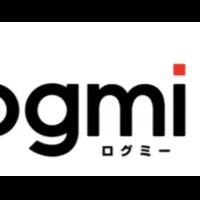
J.F. Brennan Company and Computer Guidance Integrate for Enhanced Project Management
J.F. Brennan Company Implements Integration with Autodesk Build
In a significant move to bolster operational efficiency, J.F. Brennan Company, a marine construction specialist based in La Crosse, Wisconsin, has announced the integration of its eCMS Cloud ERP system with Autodesk Construction Cloud’s management software, Autodesk Build. This partnership with Computer Guidance Corporation, a leading provider of cloud-based ERP solutions, aims to eradicate communication barriers, optimize workflow, and streamline processes across its various departments.
As the demands within the construction industry continue to evolve, J.F. Brennan has recognized the pressing need for a unified operational perspective across its numerous functions. The integration aims to address specific challenges that have emerged from previously siloed systems, such as inconsistent communication, excessive manual data entry, redundant recordkeeping, and a lack of visibility into real-time project costs.
Ann Boland, Chief Information Officer at J.F. Brennan, articulated the importance of this integration by emphasizing the critical nature of connecting the company’s accounting and project management systems. “This integration is a critical step forward for us. With eCMS and Autodesk Build now working as one, we have effectively eliminated redundant manual processes across our organization. This enhancement not only improves collaboration but also speeds up decision-making, allowing us to focus more on delivering high-quality projects,” said Boland.
The integration represents not just a technological upgrade but a strategic enhancement aimed at fostering better collaboration between the accounting and project management teams. By allowing seamless data flow between these departments, real-time visibility into job performance, financial metrics, and potential project issues is now readily available.
Steven Gross, VP of Client Solutions at Computer Guidance Corporation, expressed pride in supporting J.F. Brennan's operational integration vision. He noted, “Combining the strengths of our eCMS and Autodesk Build provides J.F. Brennan with a scalable and connected platform that effectively bridges the gap between the office and the field.”
Michael Carpenter, President of INRS, the implementation partner for this integration, highlighted the advantages of bi-directional data sharing as a cornerstone of enhancing operational efficiency. “This automated connection not only reduces the need for manual data entry but ensures that decision-makers have immediate access to accurate and relevant information whenever and wherever they need it,” Carpenter remarked.
To understand the significance of this partnership, it's essential to recognize the history and expertise of both organizations involved. J.F. Brennan Company has been a trusted name in marine construction for over a century, focusing on areas such as environmental remediation and harbor management. They have built a robust reputation by serving both public and private sector clients nationwide. Meanwhile, Computer Guidance Corporation has been at the forefront of developing comprehensive ERP solutions tailored to the construction sector for over 35 years, leveraging its technology to empower contractors with significant insights into financials and project data.
The integration with Autodesk offers a modern solution that many construction firms are actively seeking. It illustrates a commitment to technological advancement and operational improvement that reflects changing needs within the industry. As J.F. Brennan continues to push towards innovation, its alliance with Computer Guidance and Autodesk via eCMS and Build signifies a progressive leap in the industry’s transition to a more data-driven, efficient project management approach.
In conclusion, this pioneering move by J.F. Brennan Company not only enhances its internal structures but also serves as a benchmark for other construction firms aiming to integrate their operations fully. With more organizations expected to follow suit, collaborations like this could significantly reshape the construction industry by improving efficiency, enhancing communication, and ultimately delivering higher-quality projects efficiently.
Topics Business Technology)










【About Using Articles】
You can freely use the title and article content by linking to the page where the article is posted.
※ Images cannot be used.
【About Links】
Links are free to use.